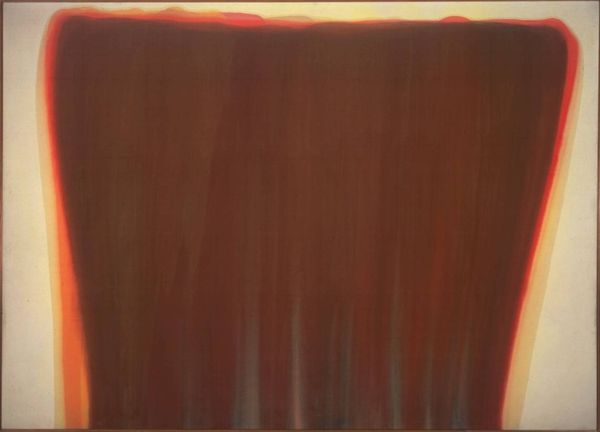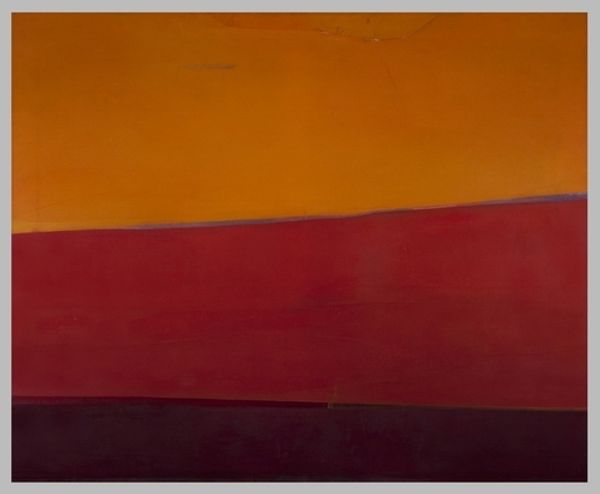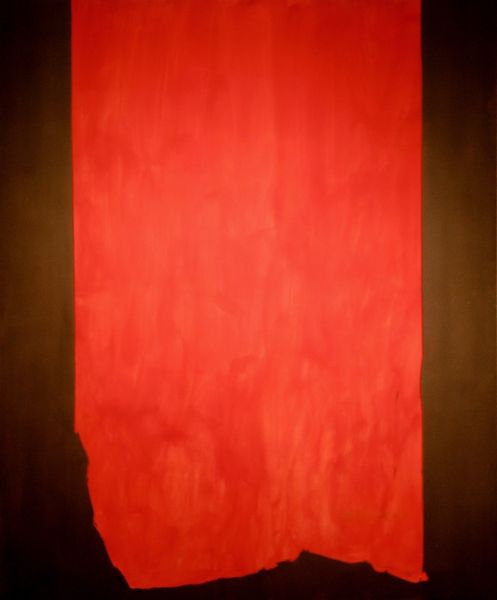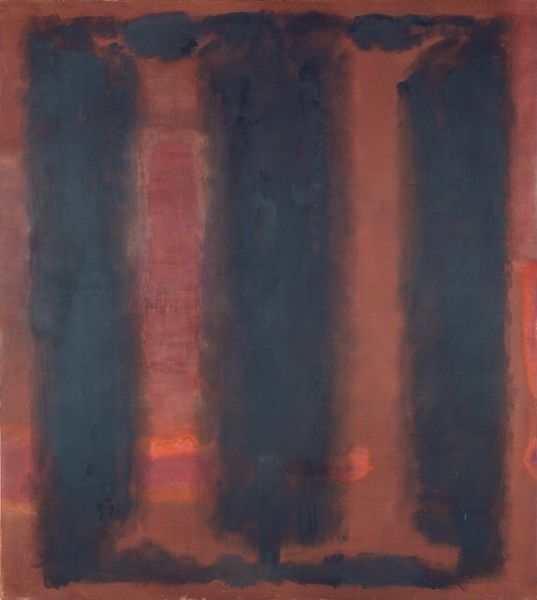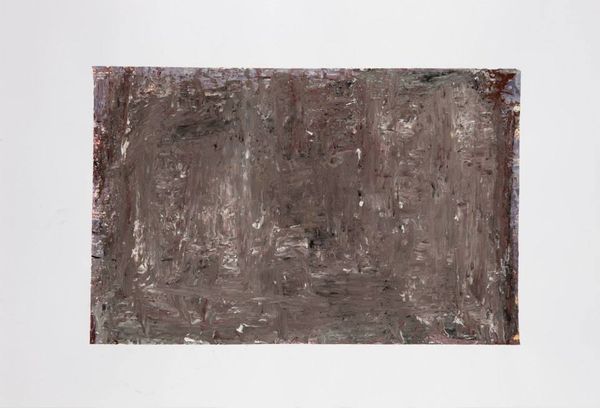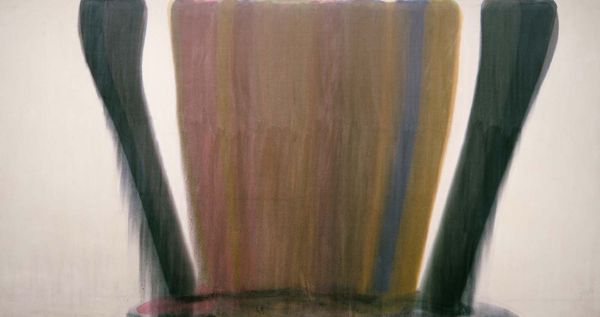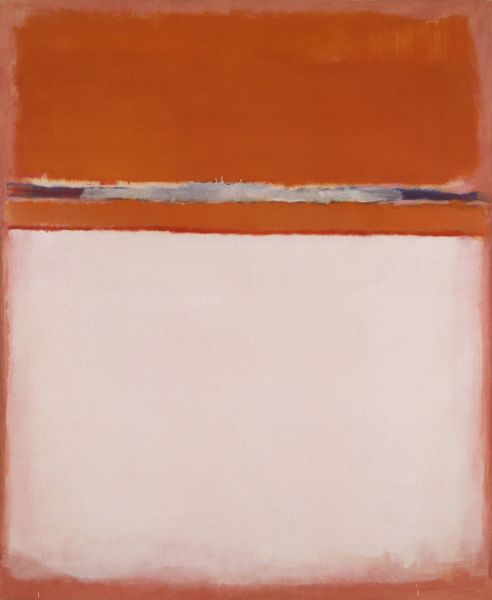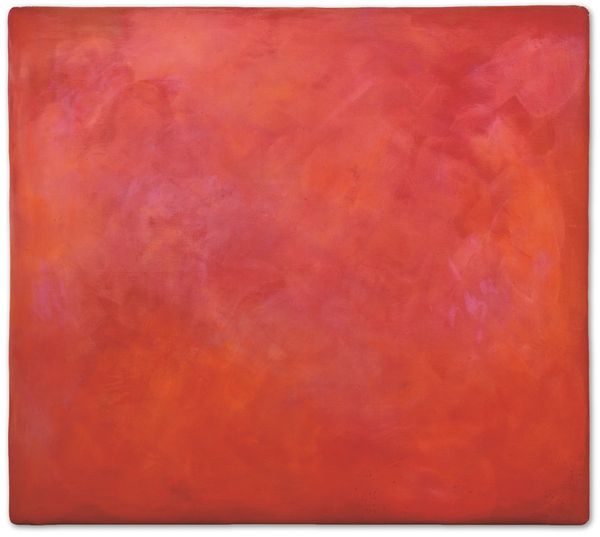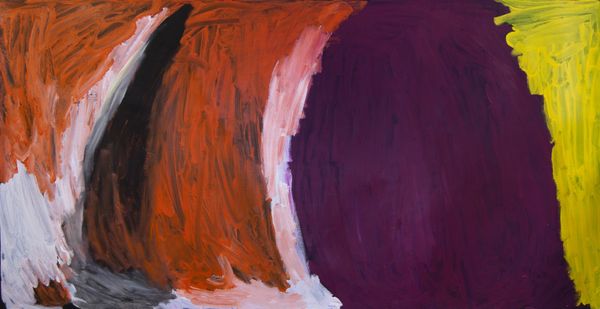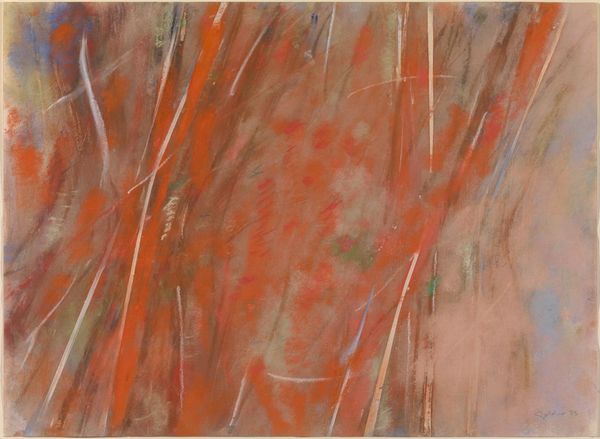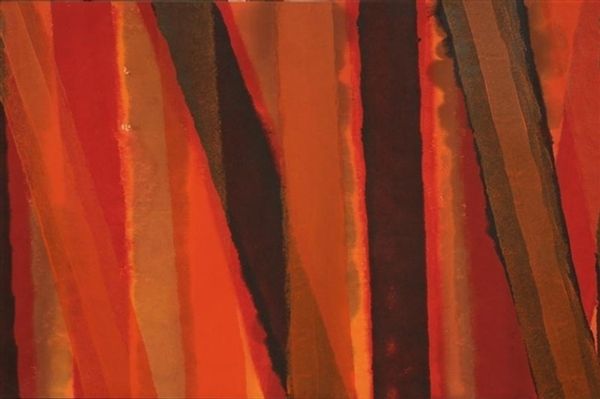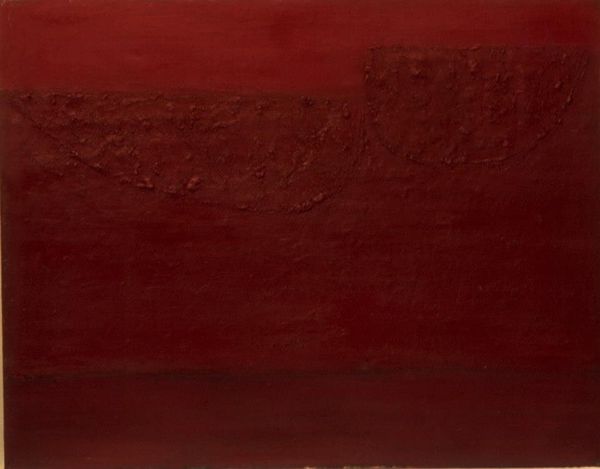
Dimensions: support: 2603 x 3594 mm
Copyright: © The estate of Morris Louis | CC-BY-NC-ND 4.0 DEED, Photo: Tate
Curator: Morris Louis, an artist of the Color Field movement, created this canvas, "VAV," now residing here at the Tate. Editor: Oh, it gives me the sensation of sunset viewed through a heatwave. The colors sort of vibrate, don't they? Curator: Indeed. Louis stained the canvas directly with thinned acrylics, a technique emphasizing flatness and pure color. The lack of brushstrokes removes the artist's hand, distancing the work from traditional expressionism. Editor: It's almost like looking at an aura. I wonder, what's the story behind the title? "VAV"...is there a secret meaning, or is it just a playful mystery? Curator: The "Veil" paintings, of which "VAV" is a part, mark a significant departure for Louis, embracing a new level of scale and chromatic intensity. We can only guess at the personal significance, but we know that it was painted during a period of transition for the artist. Editor: A veiled moment, perfectly captured. It’s like a portal to somewhere else, drenched in fading light. Curator: A lovely thought on a painting that continues to challenge and inspire.
Comments
Join the conversation
Join millions of artists and users on Artera today and experience the ultimate creative platform.
tate 7 months ago
⋮
In 1953 Louis visited Helen Frankenthaler's studio and was impressed by her experiments with staining the canvas rather than painting on it. He developed this technique in works such as VAV. One of his so-called 'veil' paintings, it was made by pouring very liquid paint down its surface. In applying paint in this way Louis was reacting against Abstract Expressionist painters such as de Kooning and Kline. They had emphasised gestural brushwork as a means of personal expression. By pouring paint, Louis sought to exclude expression because the artist no longer directly controlled the marks which resulted. Also, the stained canvas no longer 'bore' a representative image. Instead it became an object in itself. Gallery label, September 2004
